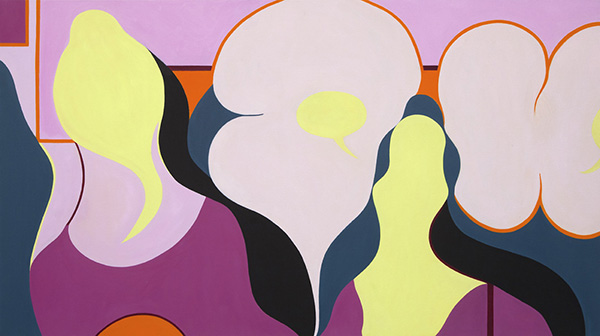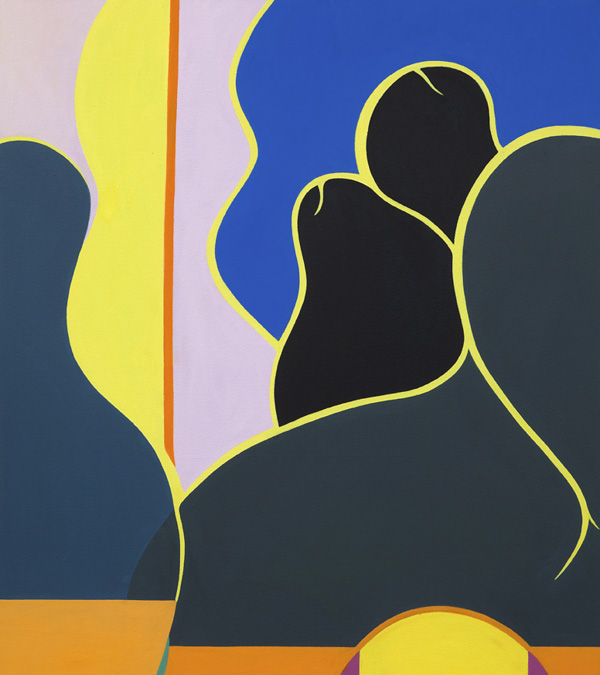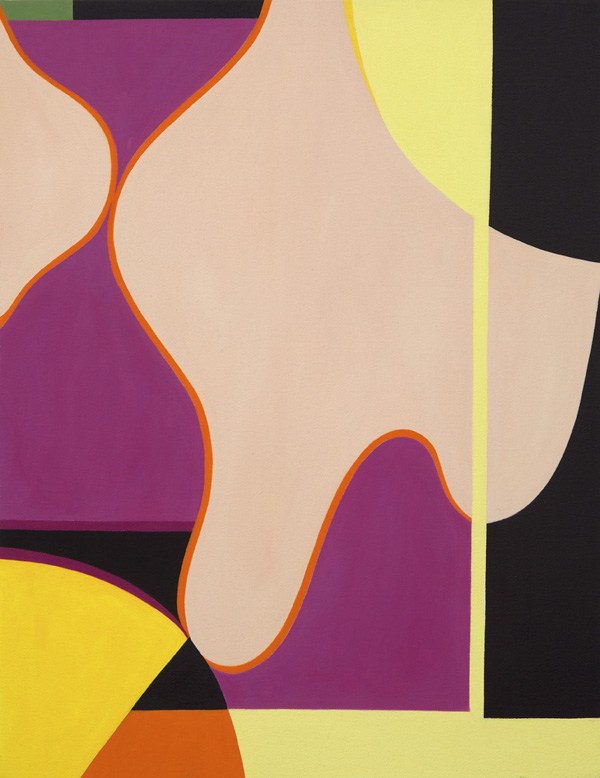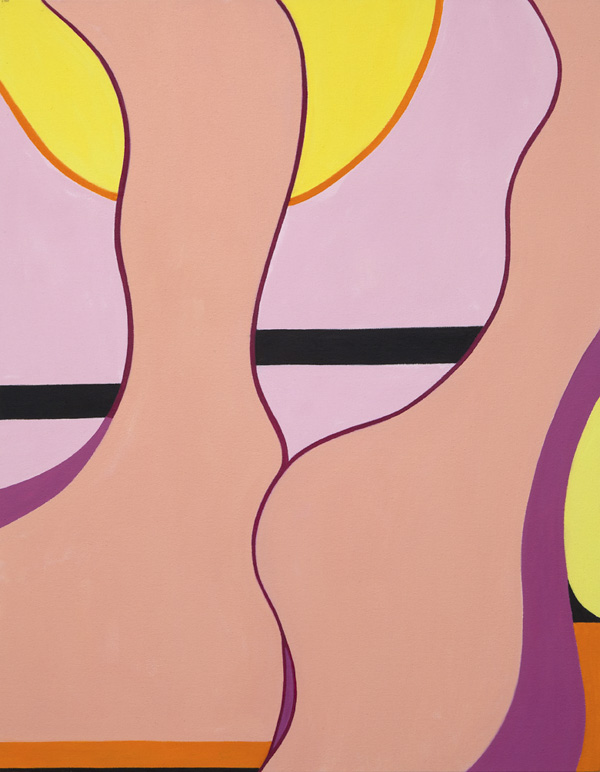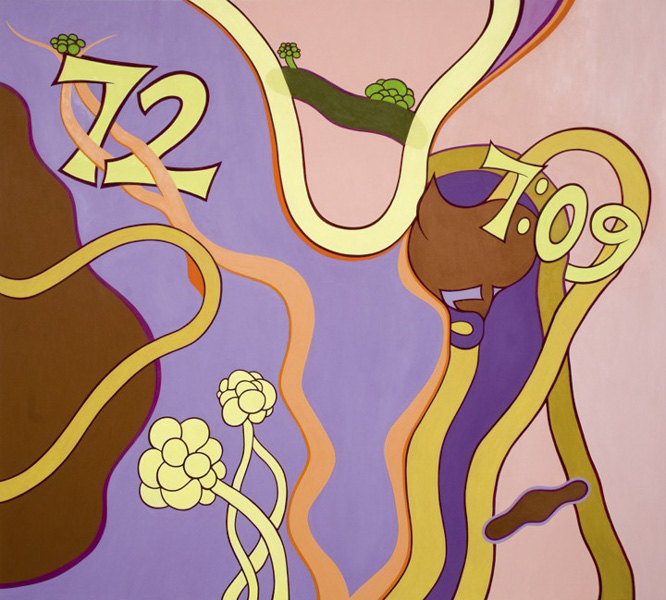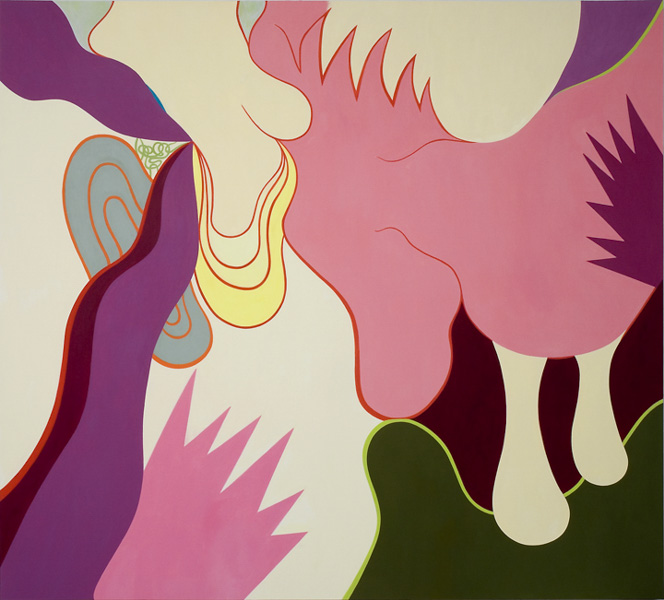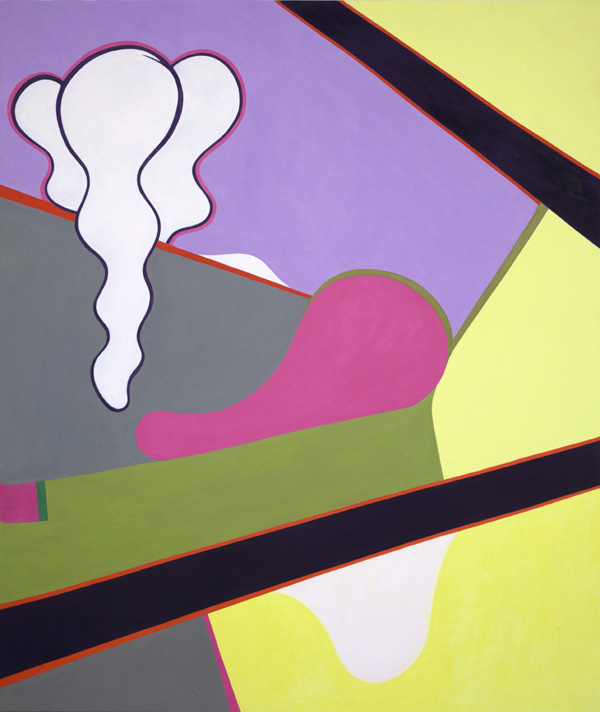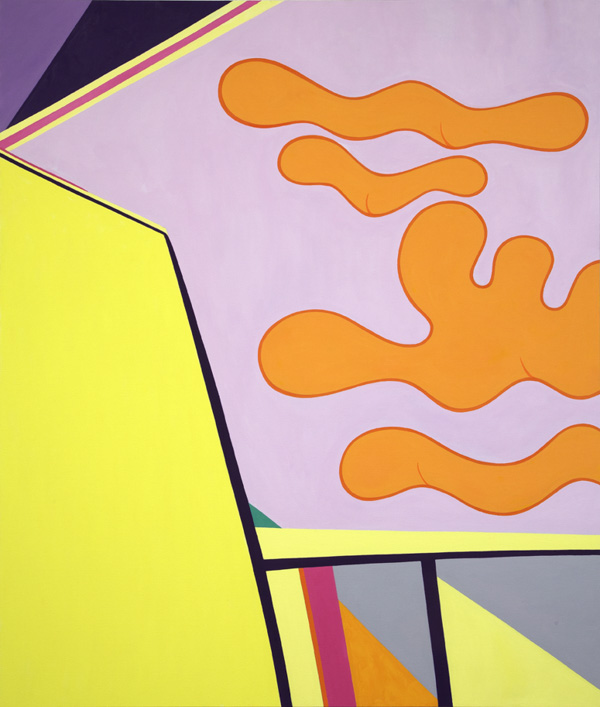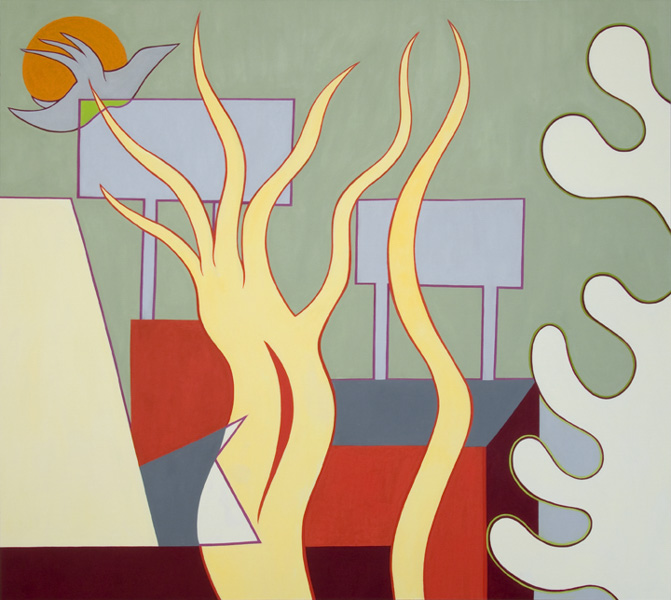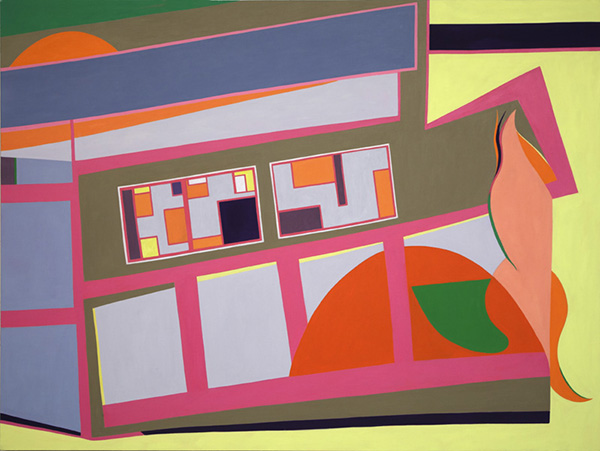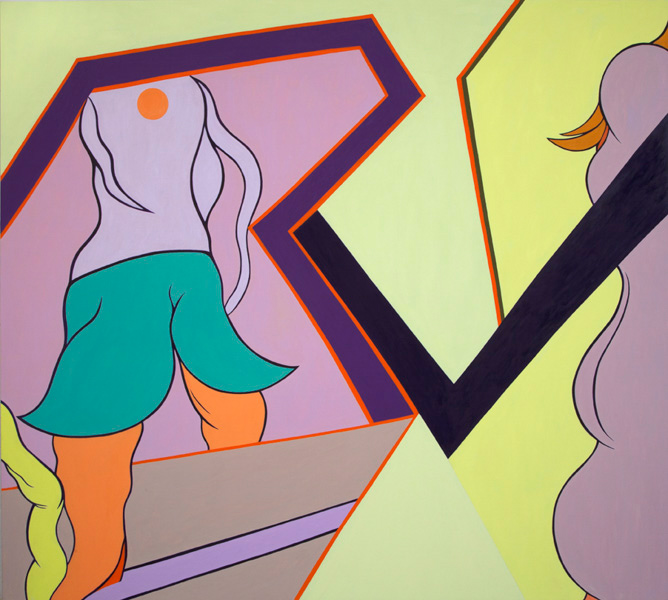
Hollywood-based artist Amanda Church displays a colorful flamboyance in this exhibition of large-scale paintings
—
Hollywoodland, the title of a 2011 exhibition I had at the aptly named Land of Tomorrow in Louisville, Kentucky, was a show which referenced not only a specific sense of place but also the accompanying imagery and sensations associated with the awareness of being there. You could say the lure of the exotic had beckoned and effectively seduced!
When it was erected in 1923, the iconic “Hollywood” sign spelled out “Hollywoodland” in an attempt to advertise the real estate in the hills above Hollywood. As the title of my show it was used to convey the overarching recognition of having discovered a sort of second home in Los Angeles. The physical openness of LA seems the opposite of New York City’s tightly configured grid and every time I land there I immediately experience the same sensation of expansiveness and possibility. This feeling eventually led to the development of a new lexicon of imagery for my paintings. In the Pop tradition of the flattened imagery of John Wesley, an artist I very much admire, I have been dealing over the years with a vocabulary derived from cultural signifiers, such as cartoon bubbles and Shmoos. After spending a significant amount of time in Los Angeles, I gradually started to incorporate imagery more specific to my particular west-coast experience, including the architecture of the 1960s-style motels where I was staying, their variously shaped swimming pools, the surrounding billboards and foliage, and the intimation of a figure, the latter paving the way for a subsequent series of silhouette paintings and portraits.
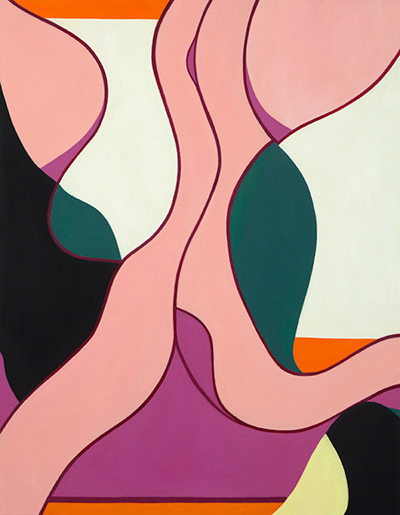
The paintings in the Hollywoodland series depict a short narrative in which a semi-autobiographical female figure enters, traverses, and finally exits a fictional space loosely based on drawings done while staying at the Highland Hotel in Hollywood. The series begins with 2011’s surreal Opportunity, in which a headless woman in a turquoise skirt straddles an ambiguous barrier of beige, and continues through Highland and Magic Castle, both named for the specific Hollywood locales they portray. Both Sides and Ghost show a landscape from which the figure has completely departed. Earlier paintings such as Cream Point and Day for Night could alternatively be termed “mindscapes,” the stirrings of landscapes as yet imaginary, while Room 412 is a fantastic rendition of the view from a Miami hotel room which included a tower displaying the time and temperature and which later became the pattern for the board shorts I designed as part of my Mandy Pants clothing company (another story).
My recent work has turned to a more abstracted and less specific perspective on place. Aerial View, for instance, was inspired by just that – a photo taken from a plane looking down at the ground below. Black Bar and Closer both continue the investigation of this sort of abstraction, while Audience, the newest painting shown here, resumes a prior interest in a kind of non-representational representation of portraiture both of individuals and groups. Since my paintings have always dealt in one way or another with the body in landscape, it seems they may now be coming full circle to encompass an ongoing interest in psychological portraiture in the realm of a place, either fictitious or actual.
Click an image below to view the gallery:
You may also enjoy Amanda’s interview with artist Julie Sass
